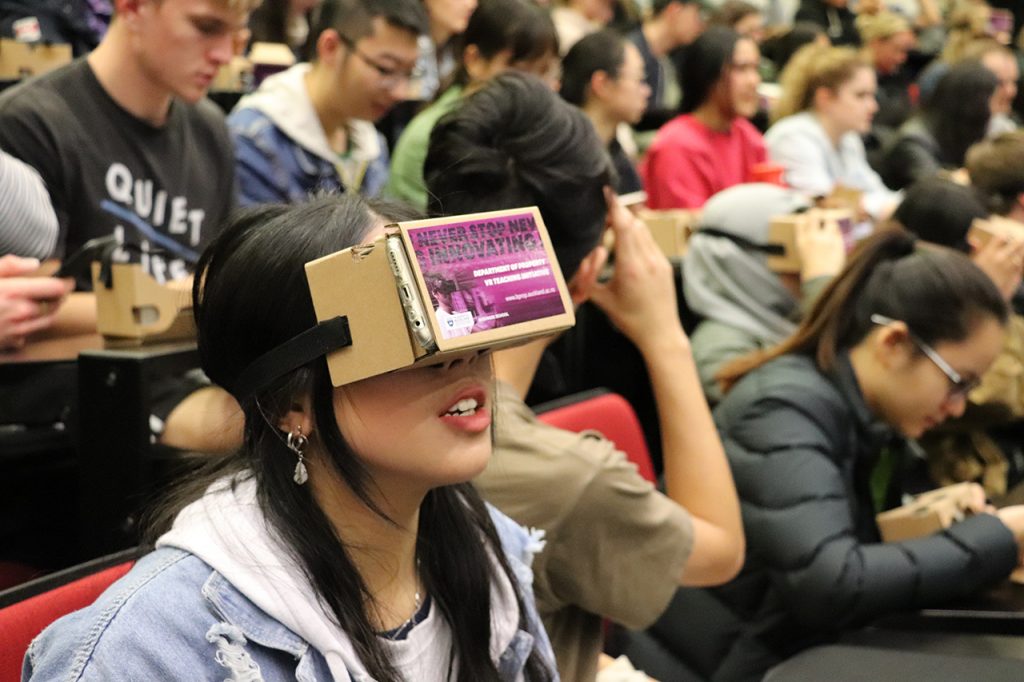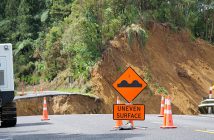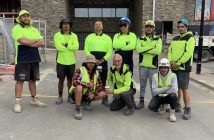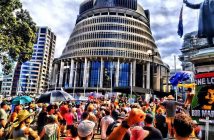Virtual reality (VR) field trips are now being used to teach students about construction and leaky homes at the University of Auckland Business School, as the technology revolutionizes the property industry

From this month, Bachelor of Property students in the stage one course “Introduction to Property” are being given Google Cardboard headsets – a low-cost virtual reality headset that resembles a cardboard Viewfinder from the 1980s, with a place to insert a smartphone.
When photos and videos are captured on a special 360-degree camera and played on a smartphone, they appear in 3D, creating an immersive experience.
As part of their coursework, students will take a virtual tour of the construction site at Parnell Terraces, a former leaky building in Auckland which is being remediated.
Through VR, students will also explore the hidden working organs of the home of the Business School, the Sir Owen G Glenn Building, including the heating and cooling equipment on the roof and plant rooms in the basement.
Senior Lecturer Dr Michael Rehm, who drove the VR initiative, says: “VR will enable students to virtually experience field trips to active construction sites and other high-risk, complex environments that would be impractical to visit in-person. VR is the next best thing to being there.
“And they can do it from wherever – their home, a café.”
Rehm introduced the technology to his students with a VR scavenger hunt he produced, in which the students had to find a hidden toy (borrowed from his children) in a virtual tour of Business School lecture theatres.
So far, Rehm has produced the VR tours himself, with the help of his colleague and wife Dr Olga Filippova.
Rehm owns an apartment in Parnell Terraces and chairs the owners’ committee and has done research into the social and economic impacts of leaky homes.
Property Department lecturer David Clifton is also looking at making a VR experience that will enable students to practice assessments of the condition of commercial lease spaces.
Another idea is to use computer modelling to produce a virtual tour inside a cladding system engineered for weathertightness, as if the viewer could shrink a la superhero Ant-Man.
Says Business School Dean Professor Jayne Godfrey: “This is an exciting initiative that will allow students to explore places too dangerous or difficult to visit in real life. VR has the potential to dissolve the lecture theatre walls, allowing students to go anywhere imaginable.”
Beyond using VR as a teaching tool, Rehm is in talks with the part of the University that runs student accommodation to explore the idea of producing virtual tours of student accommodation.
“These emerging methods of visualising the built environment are revolutionising the property industry,” he says.
One obvious application is in marketing, where virtual tours will help prospective buyers see what they’re getting from a distance, or when buying off the plans.
Another use is in so-called “smart buildings”, whose hi-tech systems constantly monitor and optimise temperature, humidity, pressure and other variables.
“VR can help visualise and manage all that complex information,” says Rehm.
“Also, you may notice cameras on building sites.
“After the leaky building disaster, 360 imagery and VR is being used to record and help keep tabs on expensive, highly complex construction projects.
“As well as being a compelling teaching tool, VR is something tomorrow’s property professionals will increasingly need to know how to use.”



